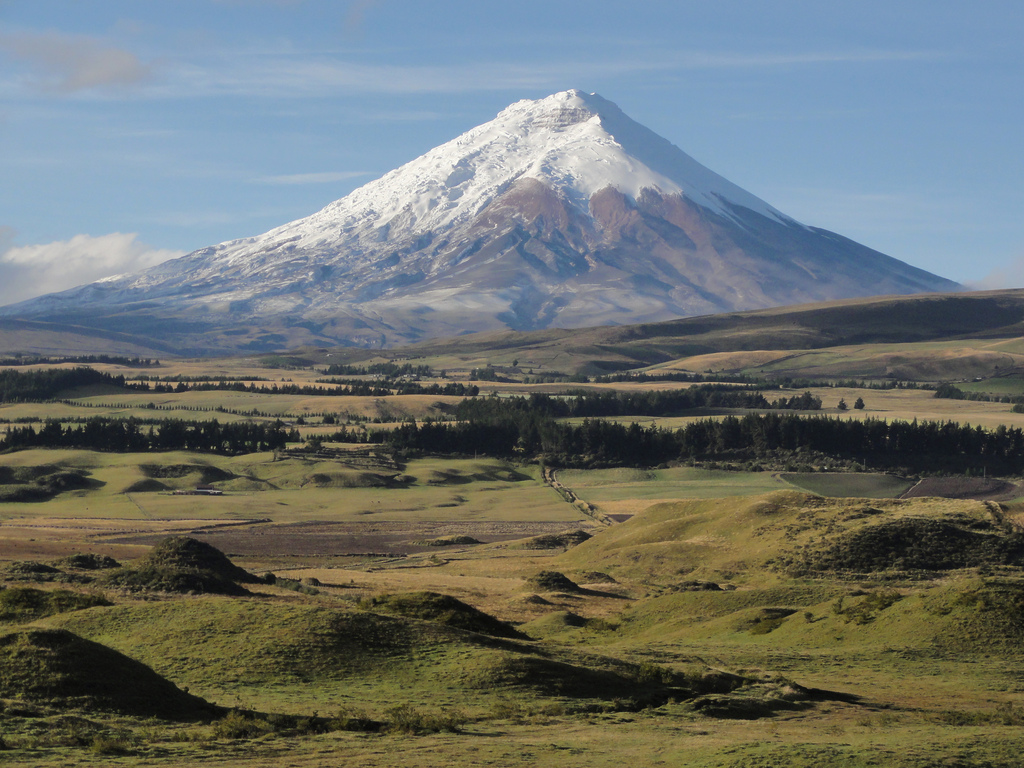
Cotopaxi Volcano on a clear day. Photo © Dave Lonsdale, licensed Creative Commons Attribution.
Volunteers might rehabilitate animals for release into the Amazonian jungle or replant native flora species on the Galapagos Islands in order to preserve its unique ecosystem.Ecuador is home to more than 13 million people. The country boasts significant ethnic and racial diversity; although counts vary, mestizos (persons of mixed European and Central American Indian ancestry) are certainly the largest ethnic group, followed by indigenous peoples, who make up roughly 25 percent of the population. More than 30 percent of the population lives below the national poverty line, and poverty rates are much higher for Ecuador’s indigenous people. (The gross national income per capita is US$4,140, per World Bank 2011 figures.)As a “megadiverse” country, Ecuador boasts more than 20,000 exotic animal and plant species, including orchids, ocelots, hummingbirds, howler monkeys, and, of course, the famed Galapagos tortoise, making it an ideal place for environmentally focused volunteering. Volunteers might rehabilitate animals for release into the Amazonian jungle or replant native flora species on the Galapagos Islands in order to preserve its unique ecosystem. There are sustainable farms all across the country where volunteers can both lend a hand and engage with the local community through environmental education or teaching English.

Ecuador Volunteer Foundation offers placement in a variety of programs. Photo courtesy of Ecuador Volunteer Foundation.
In fact, there are opportunities to teach English in all regions of the country, from remote mountain villages to coastal towns like Puerto Lopez. Puerto Lopez serves as a jumping-off point for trips to Isla de la Plata, where visitors pass humpback whales during the boat ride to see the island’s red-breasted frigate birds and blue-footed boobies. In the capital city of Quito, volunteers often work to support disadvantaged communities—such as street children, homeless elderly, or children with disabilities—and study Spanish in the afternoons.
When considering costs, note that there is a US$100 entrance fee to Galapagos National Park. Some organizations can arrange the paperwork to have this fee waived for their volunteers, but not all have the ability to do this. It normally takes six weeks for the paperwork to be completed, so volunteers must plan in advance.
Excerpted from the First Edition of Moon Volunteer Vacations in Latin America.